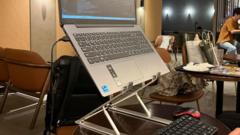South Korean cafes are increasingly grappling with a growing phenomenon: customers, particularly students, who settle in for hours, treating the establishment less as a place for a quick coffee and more as a personal study or remote workspace. This trend sees patrons arriving with extensive setups, often involving multiple laptops and a host of chargers monopolizing scarce power outlets, a scenario vividly captured by the phrase “two laptops, six plugs.” The practice strains cafe resources and impacts their ability to serve other paying customers.
The issue has escalated to a point where global chains like Starbucks have reportedly begun asking some individuals to cease bringing large, non-standard items, such as personal printers, into their branches for work. This directive underscores the evolving nature of how these public spaces are being utilized, transforming them into unofficial co-working hubs without the corresponding revenue stream for the businesses. Cafe owners observe these customers occupying prime seating for long durations, often making minimal purchases while extensively using Wi-Fi, electricity, and restroom facilities.
This extended occupancy directly affects the profitability and operational efficiency of small and large establishments alike. Tables remain unavailable for new customers, leading to decreased turnover during peak hours. The visible sight of fully occupied spaces, often by individuals immersed in their studies or work rather than socializing or dining, can also deter potential patrons seeking a more traditional cafe experience. Business owners face a delicate balance, wanting to offer a welcoming environment while also ensuring their operations remain financially viable amidst rising overheads.
The prevalence of this issue in South Korea can be attributed to several factors, including the intense academic environment which drives students to seek quiet, affordable study spots, and a robust cafe culture that has historically offered comfortable public spaces. With the rise of remote work and a potential lack of affordable alternative co-working spaces, cafes have inadvertently become default offices for many. This shift presents a significant challenge for cafe managers who must find solutions that respect customer needs without compromising their business model.
In response, some cafes are exploring various strategies to manage the situation. These might include implementing time limits for table usage during busy periods, limiting access to power outlets, or introducing minimum purchase requirements for extended stays. However, such measures must be carefully considered to avoid alienating loyal customers or damaging the cafe’s reputation for hospitality. The core dilemma remains how to effectively cater to a diverse clientele while ensuring the economic sustainability of the business in a rapidly changing social and work landscape.



